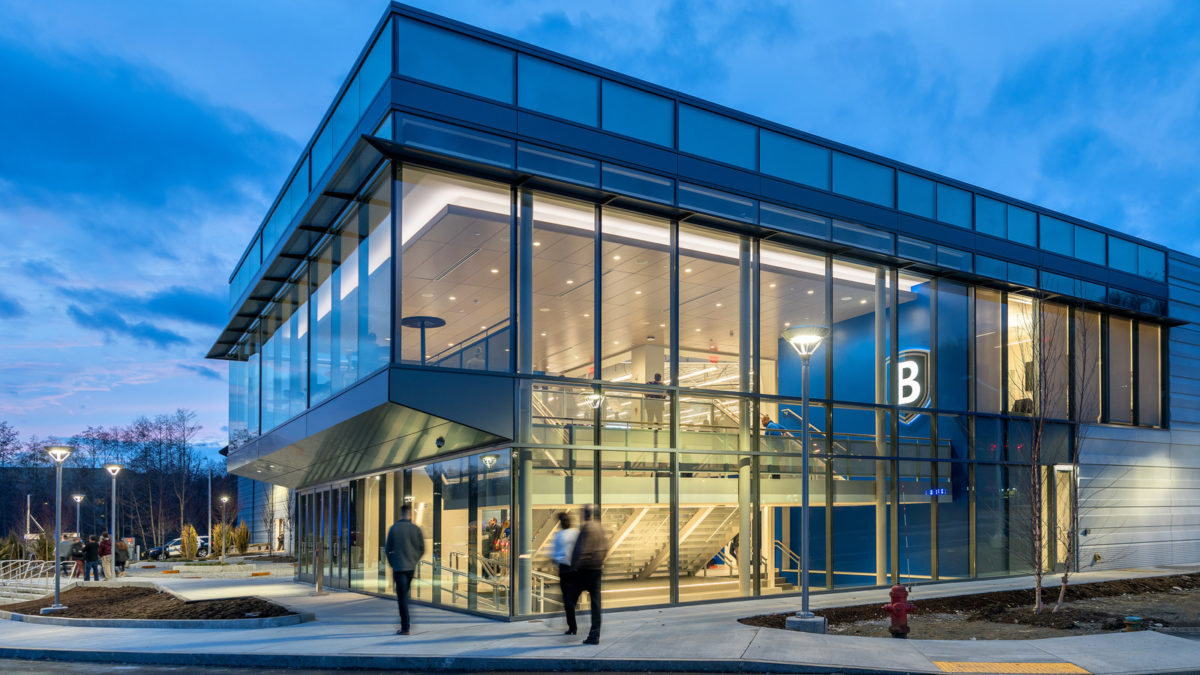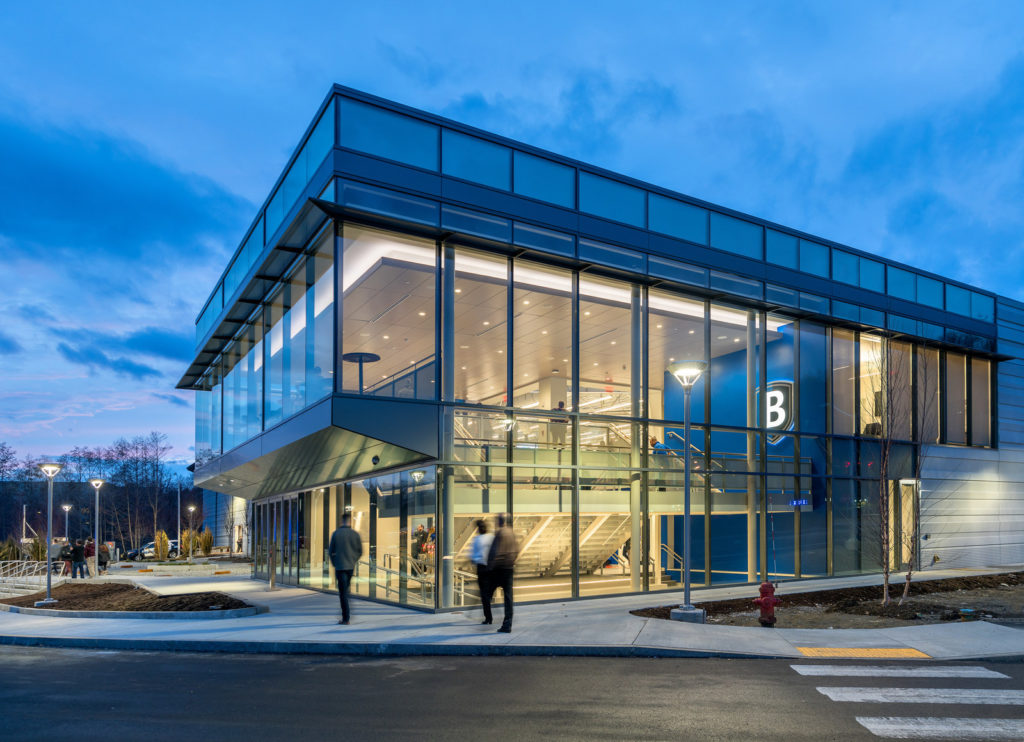
New Bentley University arena named the most environmentally sustainable in the nation. It is the first standalone ice arena to earn LEED Platinum -- the highest possible rating. (PRNewsfoto/Bentley University)

New Bentley University arena named the most environmentally sustainable in the nation. It is the first standalone ice arena to earn LEED Platinum. (PRNewsfoto/Bentley University)
The new, state-of-the-art multipurpose Bentley Arena in Massachusetts is the most environmentally sustainable in the U.S. and the first standalone ice arena to earn the LEED platinum certification, the highest possible rating, according to the U.S. Green Building Council. The award for the recently opened, 76,000-square-foot arena highlights the building’s sustainable design and energy efficiency and Bentley University’s continued rise as an innovative, nationally recognized business university.
“This first-in-the-nation rating for the Bentley Arena demonstrates Bentley’s strong and longstanding commitment to sustainability,” said Bentley University President Gloria Cordes Larson. “From our university-wide commitment to achieving carbon neutrality by 2030, to our Sustainability Science major for students, to our campus waste reduction program that recycles more than 270 tons of material per year, Bentley acts every day on our mission of preparing environmentally conscious, socially responsible leaders.”
“Thanks to the combination of the rooftop solar technology and energy-efficient mechanical design, the overall grid energy required to power the arena will be less than half of what it would take to power a building of a similar size,” said Amanda King, director of sustainability at Bentley. “These technologies also cut the building’s carbon footprint in half.”
The Bentley Arena hosts the university’s NCAA Division I hockey team and prominent university events such as career fairs, high-profile speakers, alumni events and concerts.
The standout sustainable features of the arena include:
- A 504 kilowatt, rooftop solar array developed by Rivermoor Energy that will generate 40 percent of the building’s annual electricity needs.
- Innovative technology that captures heat generated from the rink’s ice-making equipment to heat water throughout the building.
- More glass windows than a typical arena, allowing for more natural light that decreases the amount of electricity needed to light the building’s interior.
- High-efficiency LED lighting with smart, motion-detecting controls that turn off lights when no one is present to sharply reduce electricity usage.
- Ice-making and air conditioning systems that use zero CFC-based refrigerants. Chlorofluorocarbons or “CFCs” have been found to destroy the planet’s stratospheric ozone layer.
- The highest-efficiency plumbing fixtures on the market, including waterless urinals, dual-flush toilets, and low-flow faucets and showers to reduce the demand for water.
- At least 50% of wood used in the building is sourced from forests with certified sustainable forestry practices
- About 10% of construction and finish materials were locally sourced and about 20% of construction and finish materials contain recycled content.
“Bentley’s commitment to using solar energy to generate 40 percent of the annual electricity needs of its new state-of-the-art arena is impressive,” said John Tourtelotte, managing director of Rivermoor Energy, which partnered with Bentley to develop the 504 kilowatt solar array. “The Bentley Arena’s thoughtful use of solar technology to power a modern, energy efficient arena demonstrates leadership in building design and is a model for other universities and companies to follow.”
“ARC was honored to have the opportunity to partner with Bentley University to design the first multipurpose hockey arena in the country to achieve LEED platinum certification. The new arena embodies the goals and aspirations of the University to be a national leader in sustainability. This project was accomplished through hard work, and many people came together to embrace this challenge with dedication and enthusiasm. From start to finish, it was a pleasure to be a part of this team,” said Philip Laird, president of ARC.
“At Suffolk we foster a corporate culture that embraces innovation and environmentally sustainable practices, which is why we are thrilled to have partnered with Bentley University to help make their dream for this incredible new arena a reality,” said John Fish, chairman and CEO of Suffolk Construction, which built the arena. “Congratulations to Bentley for achieving the prestigious LEED platinum certification for this state-of-the-art arena, and thank you for your unwavering commitment to sustainability and a better tomorrow for all of us.”
“The Bentley Arena’s environmentally sustainable, energy-saving construction will reduce electricity costs and provide a strong return on investment for many years,” said Penni Conner, senior vice president and chief customer officer for Eversource, which provided incentives for many of the energy efficiency measures installed throughout the building. “At Eversource, we are connecting colleges and universities across our footprint to solutions for savings. This LEED platinum certification from the U.S. Green Building Council is a well-deserved honor.”
“Bentley University has demonstrated extraordinary leadership in sustainable design by achieving LEED platinum certification for the arena project,” said Amanda Garvey Lehman, associate at Thornton Tomasetti, Bentley’s LEED consultants for the arena. “Energy conservation measures and sustainable design initiatives were prioritized throughout design and construction, resulting in a building that is leading the way in areas of human and environmental health.”
